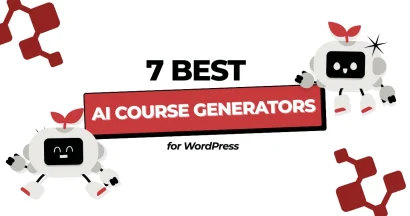Have you ever wondered how artificial intelligence (AI) transforms our learning and teaching?
AI is no longer just a futuristic concept—it’s a powerful tool revolutionizing various industries, including education. From personalized learning experiences to intelligent tutoring systems and automated grading, AI is transforming the eLearning scene, offering unprecedented opportunities to enhance student engagement, improve learning outcomes, and streamline administrative tasks.
In this comprehensive guide, we will delve into the exciting world of AI in eLearning, exploring its key benefits, top AI tools, and implementation strategies.
Whether you are an educator, instructional designer, or simply interested in the future of education, this article will provide you with the knowledge and motivation you need to harness the power of AI and realize the full potential of eLearning.
So, let’s discover how AI is revolutionizing the way we learn and teach.
Eduma – Education WordPress Theme
We provide an amazing WordPress theme with fast and responsive designs. Let’s find out!
What is AI?
Artificial intelligence (AI) refers to the ability of machines to mimic human intelligence, such as learning from experience, understanding language, and solving problems. It encompasses a range of technologies that enable machines to perform tasks that typically require human intelligence.
- AI is the broader concept of machines being able to perform tasks that require human intelligence.
- Machine learning is a subset of AI that allows systems to learn from data and improve their performance on a specific task without being explicitly programmed.
- Deep learning is a type of machine learning that uses artificial neural networks with multiple layers to analyze complex patterns in data.
How AI is Transforming Education
AI is revolutionizing education by providing personalized learning experiences, intelligent tutoring systems, and automated grading.
- Personalized learning: AI can adapt to individual student needs, providing customized content and pacing.
- Intelligent tutoring systems: AI-powered tutors can provide personalized feedback and guidance, simulating one-on-one instruction.
- Automated grading: AI can save teachers time by automating grading for objective assessments.
Studies have shown that AI can significantly improve learning outcomes and student engagement.
Key Benefits of Using AI in eLearning
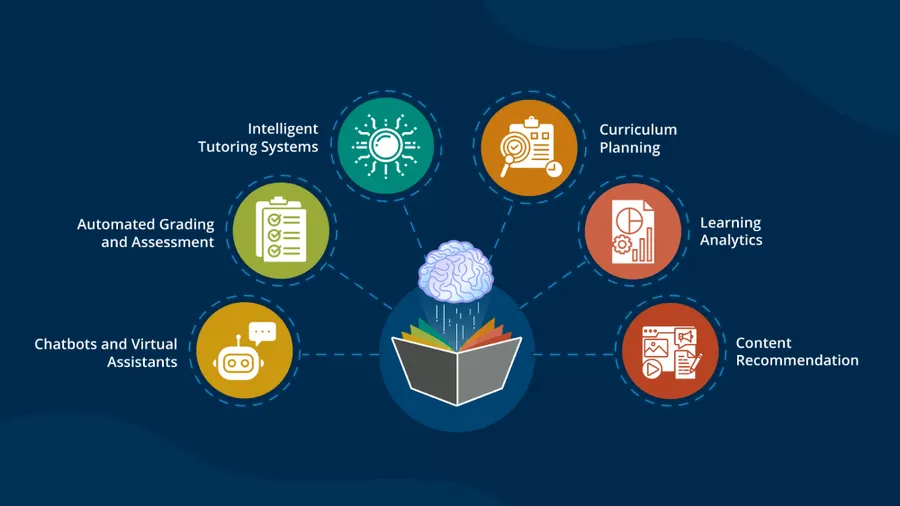
Personalized Learning Experiences
One of the most significant advantages of AI in eLearning is its ability to create personalized learning experiences. Traditional one-size-fits-all approaches often fail to cater to the diverse learning styles and paces of students. AI-powered platforms can analyze student data, such as their strengths, weaknesses, and preferences, to deliver customized content, activities, and assessments.
This ensures that each learner receives the right level of challenge and support, maximizing their learning potential. These sophisticated adaptive learning systems require expert AI/ML software development to effectively analyze student performance metrics and deliver truly personalized educational pathways.
Increased Student Engagement
Keeping learners engaged is a perennial challenge in eLearning. AI can help address this by creating more interactive and immersive learning experiences. Gamification elements, simulations, and virtual reality can be seamlessly integrated into eLearning courses, making learning fun and exciting. AI-powered chatbots and virtual assistants can also provide 24/7 support, answering student questions and offering guidance whenever needed.
Improved Efficiency and Automation
Educators often find themselves overwhelmed with administrative tasks, leaving less time for actual teaching and student interaction. AI can automate many of these mundane tasks, such as grading assignments, scheduling classes, and analyzing student data. This frees up educators to focus on what they do best – inspiring and guiding their students. Moreover, AI can assist in content creation, generating quizzes, summaries, and even entire courses, saving educators valuable time and effort.
Data-Driven Insights
AI’s ability to analyze vast amounts of student data can provide valuable insights into learning patterns, performance trends, and areas for improvement. This data-driven approach allows educators to identify struggling students early on and provide timely interventions. AI can also predict student performance, enabling educators to proactively address potential challenges. However, it’s crucial to handle student data responsibly, ensuring privacy and ethical considerations are always prioritized.
TOP AI Tools for eLearning Website
360Learning
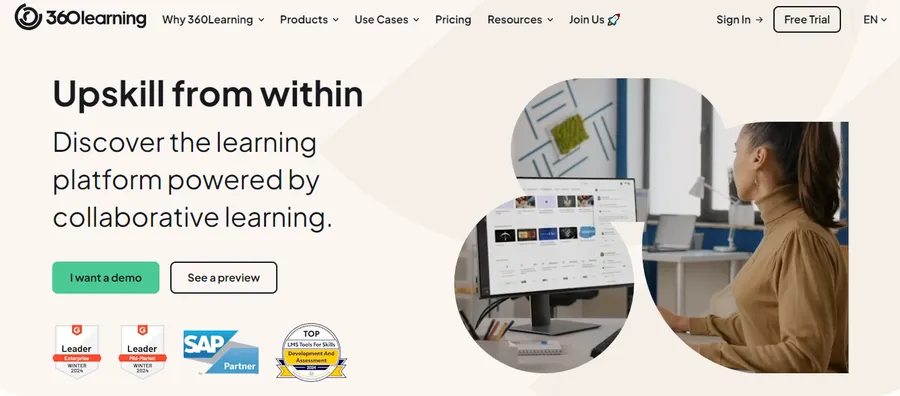
360Learning is a collaborative learning platform that leverages AI to create a culture of continuous learning within organizations. It empowers subject matter experts to become trainers, fostering knowledge sharing and skill development.
Key Features
- AI-powered course creation: Easily create and update courses with AI assistance.
- Collaborative learning: Encourage knowledge sharing and peer-to-peer learning.
- Skill development: Track and analyze employee skill development.
Cognii
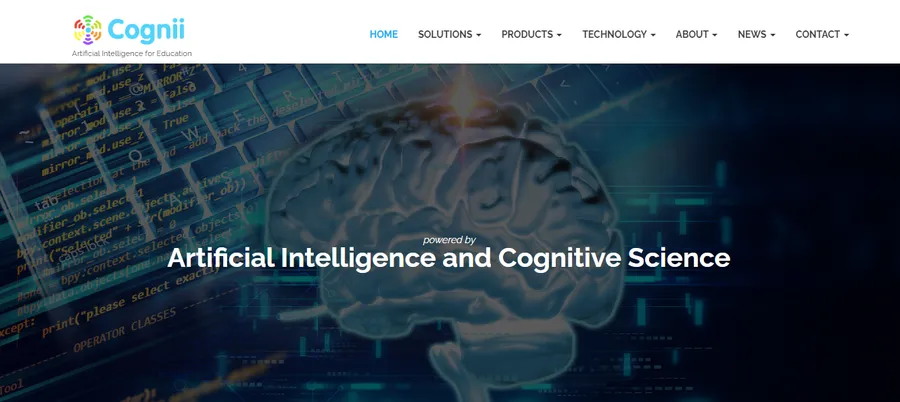
Cognii is an AI-powered virtual learning assistant that provides personalized feedback and guidance to learners. It uses natural language processing to understand student responses and adapt to their individual learning needs.
Key Features
- Personalized learning: Adapts to each student’s learning style and pace.
- Virtual learning assistant: Provides real-time feedback and support.
- Assessment and analytics: Tracks student progress and identifies areas for improvement.
Adobe Captivate
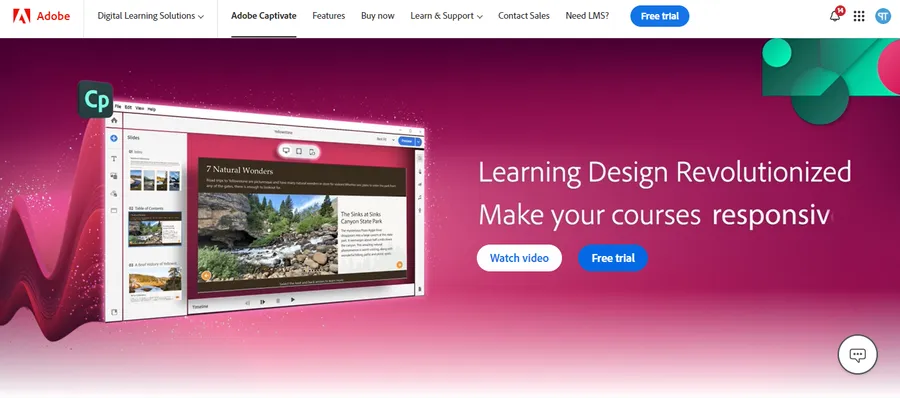
Adobe Captivate is a powerful eLearning authoring tool that allows you to create interactive courses, simulations, and quizzes. It offers a range of AI-powered features to streamline course development and enhance learner engagement.
Key Features
- Interactive content creation: Develop engaging courses with videos, simulations, and quizzes.
- AI-powered accessibility: Automatically generates captions and transcripts for videos.
- Responsive design: Courses adapt to different devices and screen sizes.
Synthesia
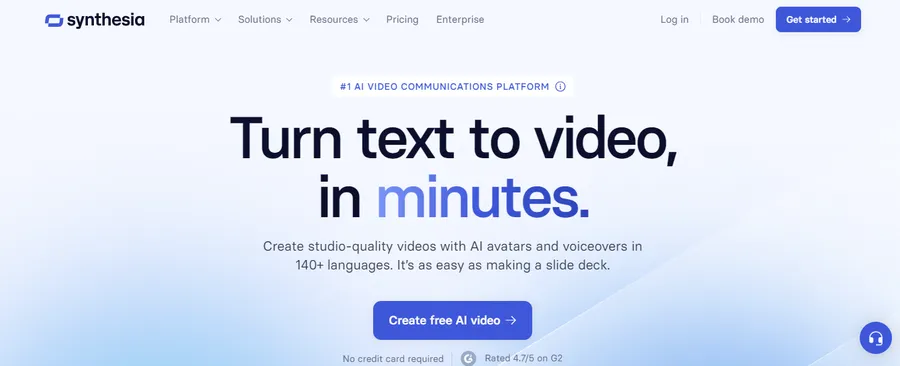
Synthesia is an AI video generation platform that allows you to create realistic videos with AI avatars. It’s a great tool for creating eLearning content, product demos, and personalized video messages.
Key Features
- AI avatar creation: Generate lifelike avatars to present your content.
- Text-to-speech: Convert text into natural-sounding speech in multiple languages.
- Customizable templates: Create professional-looking videos quickly and easily.
TalentLMS
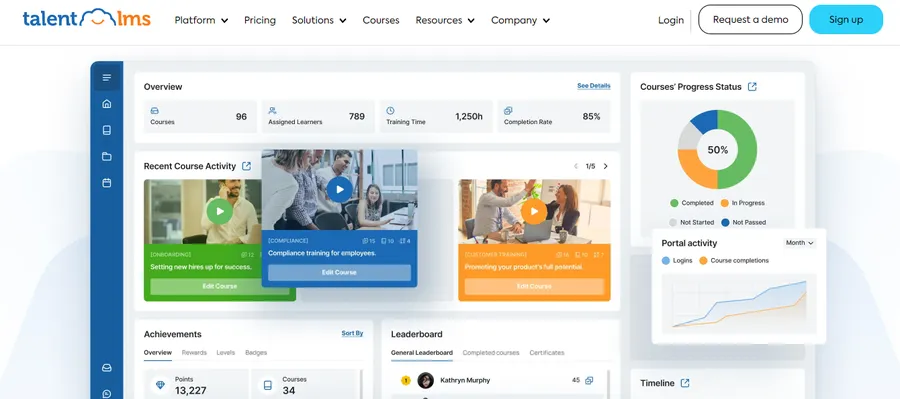
TalentLMS is a cloud-based learning management system (LMS) that makes it easy to create, manage, and deliver online courses. It offers a range of AI-powered features to personalize the learning experience and improve course completion rates.
Key Features
- Course creation and management: Develop and organize courses with ease.
- Personalized learning paths: Recommend courses based on learner interests and skill levels.
- Gamification: Motivate learners with badges, points, and leaderboards.
Implementing AI in Your eLearning Strategy
Identify Your Needs and Goals
Before diving into AI implementation, it’s crucial to assess your current eLearning challenges and identify areas where AI can make the most significant impact. Start by defining your goals, whether it’s improving student engagement, personalizing learning, or automating tasks.
It’s often recommended to start with small, pilot projects to test the effectiveness of AI tools before scaling up. This allows you to gather feedback, identify potential challenges, and refine your approach.
Choose the Right AI Tools
Selecting the right AI tools is crucial for successful implementation. Consider factors such as your budget, technical capabilities, and the specific needs of your learners. Prioritize user-friendliness, integration capabilities, and data security when evaluating different options.
Train Your Team
Ensure that your educators and staff are comfortable using AI tools effectively. Provide training and professional development opportunities to build their skills and confidence. Encourage ongoing learning and experimentation to stay ahead of the curve in this rapidly evolving field.
Conclusion: How To Use AI in eLearning
AI is revolutionizing eLearning, offering personalized experiences, boosting engagement, and streamlining processes. While challenges and ethical considerations exist, the potential benefits are immense. By embracing AI and using it responsibly, we can create a more effective, inclusive, and exciting learning environment for all.
Read More: 7 Best Managed WordPress Hosting Services
Contact US | ThimPress:
Website: https://thimpress.com/
Fanpage: https://www.facebook.com/ThimPress
YouTube: https://www.youtube.com/c/ThimPressDesign
Twitter (X): https://twitter.com/thimpress
